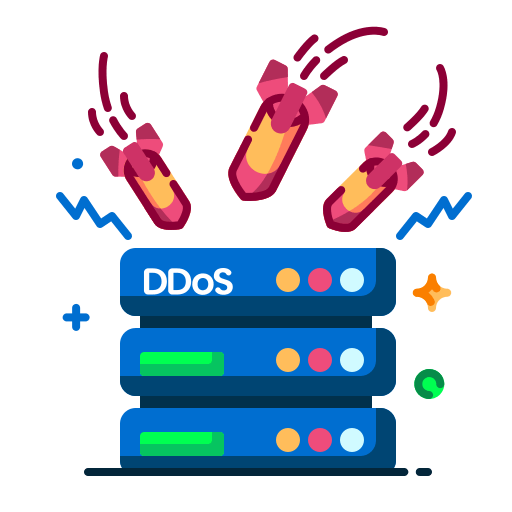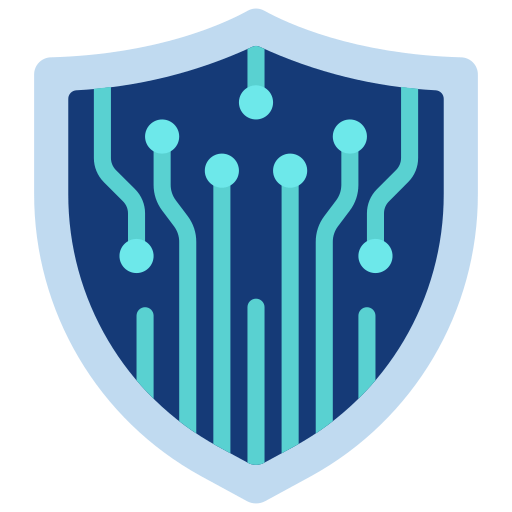Introduction
In today’s world of continuous development, digital technology has become one of the most essential parts of human day-to-day life. Either it’s for the purpose of communication, shopping, entertainment, or banking, we are heavily relying on technology. Though technology has made our lives more convenient, we also need to understand that it has given a higher chance for someone to steal our personal data.
We either knowingly or unknowingly give away this information and sometimes pay a huge price for it. And this is when cybersecurity comes into play. Just as we protect physical data that is in papers and stuff, it is also necessary for us to protect our digital data that is present in our phones, laptops, and computers, and cyber security helps us a lot in doing that.

To know how we can protect the data, firstly we need to know how someone can steal it. And in this blog, we will address the 10 common cyber security threats that are most prevalent and also the preventive measures that we can take to control them.
Common Types of Cyber Security Threats:

Phishing Attacks
In Phishing assaults, cybercriminals use strategies like electronic mail, SMS, phone calls, and social media to trick the sufferers into presenting sensitive information or downloading malicious files which can infect their devices. This attack may be of various sorts and is discussed in brief inside the beneath paragraph. Spear phishing is an email attack targeted on particular individuals or groups, while Whaling targets highly ranked executives to steal money or personal information. SMiShing involves sending fraudulent text messages to trap individuals into disclosing sensitive statistics, at the same time Vishing includes impersonating legit organizations through telephone calls and voice messages.
Prevention: To defend in opposition to phishing assaults, be careful when receiving unsolicited emails, verify the sender’s identification, and avoid clicking on unknown hyperlinks or downloading attachments from unverified belongings.

Malware
Malware, or malicious software, is like a bunch of digital harassers that can sneak up on your computer and cause all kinds of damage. Think of them as little digital villains with names like viruses, spyware, Trojans, and ransomware. They are out to steal your stuff, mess with your files, and maybe even hold your computer hostage until you pay the ransom!
Prevention: Now you have to be a bit of a cybersecurity superhero to protect yourself from this digital troublemaker. Start by getting some good antivirus software and making sure it is always up-to-date. Keep all of your operating systems and software systems up to date with the latest maintenance and security updates. Think of these updates as your computer’s shield against bad guys. Only get resources from trusted sources, and stay away from shady websites patronized by the wicked.

Password Attacks
Password attacks are like some sneaky parents who try and bet or smash into your mystery codes to get into your online money owed. These attacks can come in different flavors, like a wonderful-strong guessing sport, the use of massive phrase lists, or even using stolen passwords from other locations.
Prevention: To forestall those sneaksters, make certain your secret codes are first-rate hard to bet. Use a mix of big and small letters, numbers, or even some special symbols like ! Or @. It’s an amazing concept to use a special device referred to as a password keeper to create and maintain your secret codes securely. And for extra protection, switch on something known as multi-component authentication (MFA), which makes it even more difficult for the sneaky parents to get in.

DDoS Attacks
Distributed Denial of Service (DDoS) assaults the goal of overwhelming a website, server, or community with an immoderate quantity of visitors, rendering it inaccessible to legitimate customers. These assaults disrupt online offerings and might cause financial losses for companies.
Prevention: To mitigate the impact of DDoS assaults, recall employing DDoS mitigation offerings supplied by legitimate providers. Implement community redundancy and failover mechanisms to ensure service continuity throughout an attack. Develop a comprehensive incident reaction plan to address DDoS assaults effectively.

Man-In-The-Middle Attacks
Man-In-The-Middle (MITM) attacks contain cybercriminals intercepting conversations between two parties without their knowledge. In a MITM assault, the attacker secretly relays and, in all likelihood, alters the messages between the two parties.
Prevention: Mitigate MITM attacks by using steady, encrypted connections (https://) on every occasion feasible, especially while transmitting touchy information. Be careful while connecting to public Wi-Fi networks, as they may be vulnerable to MITM assaults. Ensure that your devices and software are frequently up-to-date with security patches.

Insider Threats
Insider threats arise when individuals within an organization misuse their admission privileges to compromise safety. These threats can stem from employees, contractors, or anybody with legal access to touchy systems and facts.
Prevention: Preventing insider threats calls for a combination of safety features. Implement strict access controls and the precept of least privilege, making sure that individuals have access to only the sources vital for their roles. Continuously monitor screen user activities and behavior for signs of suspicious or unauthorized movements. Establish clear policies and approaches for reporting and addressing insider threats.

Social Engineering
Social engineering attacks control human psychology to trick individuals into divulging sensitive information or making moves that compromise safety. Cybercriminals frequently exploit agreement, fear, or urgency to achieve their dreams.
Prevention: Defense against social engineering assaults starts with education and awareness. Train yourself and your personnel to understand common place social engineering procedures, along with phishing emails, pretexting (developing a fabricated scenario to extract information), or baiting (attracting customers to download malware). Encourage a culture of skepticism when encountering unsolicited requests for sensitive information.

Zero Day Exploits
Zero-day exploits are assaults that concentrate on vulnerabilities in software programs or hardware that are not known to the producer or the public. Cybercriminals discover and exploit those vulnerabilities before developers can create patches or fixes.
Prevention: Zero-day exploits are hard to prevent, but you may reduce your threat by keeping your software and operating systems up to date. Developers regularly launch patches and updates that address recognized vulnerabilities. Employ vulnerability management software to evaluate and prioritize capacity risks.

Data Breaches
Data breaches involve the unauthorized access to, robbery, or publicity of sensitive information, such as personal records, credit card numbers, or intellectual property. These breaches may have extreme outcomes, including monetary losses and reputational damage.
Prevention: Protect sensitive data by means of encrypting it, both in transit and at rest. Develop and put in place sturdy entry controls, limiting access to legal personnel only. Regularly audit and reveal facts to get admission to and usage. Establish an incident reaction plan to respond unexpectedly to any facts breach and comply with facts safety guidelines.

IoT Vulnerabilities
The Internet of Things (IoT) has ushered the new technology of connectivity, with electronic devices ranging from thermostats to domestic security cameras. However, these gadgets can introduce vulnerabilities into your community if they are not adequately secured.
Prevention: To secure IoT devices, change default passwords immediately upon installation. Regularly update the firmware or software on these devices to patch regarded vulnerabilities. Isolate IoT gadgets on a separate network from vital systems to decrease the effect of capability breaches.
Conclusion:
To guard our digital assets and ourselves from cyber threats, it’s crucial to be vigilant and proactive. Understanding common varieties of threats is essential, but enforcing preventive measures is likewise important. In the present-day virtual age, cybersecurity is a shared obligation. Adopting sturdy password practices, staying vigilant against phishing attempts, and keeping software programs up-to-date can lessen publicity to threats.
Fostering a tradition of cybersecurity popularity is likewise critical. With dedication, training, and first-class practices, we can guard ourselves and our virtual assets from the ever-changing landscape of cybersecurity threats.
Are you geared up to strengthen your digital fort and protect your business from ever-evolving cybersecurity threats?If not, Look no further as our cybersecurity services are tailor-made to shield your virtual assets, ensuring uninterrupted commercial enterprise operations and peace of mind.
With a team of dedicated experts, modern-day DDoS mitigation services, and a complete incident reaction plan, mVerve is here to preserve your online presence.
Don’t wait till the digital bullies strike; pick out our cybersecurity solutions and allow us to stand guard over your virtual kingdom. Your commercial enterprise’s safety is our priority.
Visit: https://mverve.com/cyber-security/ to know more about our Cyber Security Services.




















